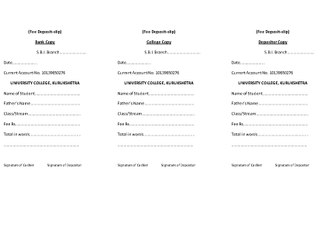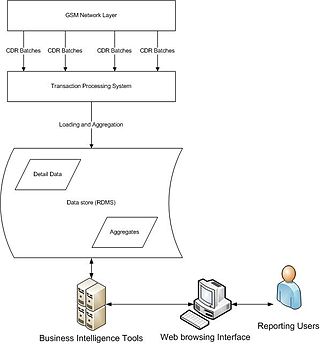Related Research Articles

A fee is the price one pays as remuneration for rights or services. Fees usually allow for overhead, wages, costs, and markup. Traditionally, professionals in the United Kingdom receive a fee in contradistinction to a payment, salary, or wage, and often use guineas rather than pounds as units of account. Under the feudal system, a Knight's fee was what was given to a knight for his service, usually the usage of land. A contingent fee is an attorney's fee which is reduced or not charged at all if the court case is lost by the attorney.
Phone fraud, or more generally communications fraud, is the use of telecommunications products or services with the intention of illegally acquiring money from, or failing to pay, a telecommunication company or its customers.

An electricity meter, electric meter, electrical meter, energy meter, or kilowatt-hour meter is a device that measures the amount of electric energy consumed by a residence, a business, or an electrically powered device.
In telecommunications, a long-distance call (U.S.) or trunk call is a telephone call made to a location outside a defined local calling area. Long-distance calls are typically charged a higher billing rate than local calls. The term is not necessarily synonymous with placing calls to another telephone area code.
A telecommunications tariff is an open contract between a telecommunications service provider and the public, filed with a regulating body such as state and municipal Public Utilities Commissions and federal entities such as the Federal Communications Commission (FCC). Such tariffs outline the terms and conditions of providing telecommunications service to the public including rates, fees, and charges.
Business activity monitoring (BAM) is software that aids the monitoring of business activities that are implemented in computer systems.
A dedicated hosting service, dedicated server, or managed hosting service is a type of Internet hosting in which the client leases an entire server not shared with anyone else. This is more flexible than shared hosting, as organizations have full control over the server(s), including choice of operating system, hardware, etc.
IntegRate was a software product written in C++ based on a pipe-lined high performance architecture for handling batch rating of telecommunications using call detail records (CDR), developed by the German software company Solution 42.
A million service units (MSU) is a measurement of the amount of processing work a computer can perform in one hour. The term is most commonly associated with IBM mainframes. It reflects how IBM rates the machine in terms of charging capacity. The technical measure of processing power on IBM mainframes, however, are Service Units per second.
Call logging is the collection, evaluation, and reporting of technical and statistical data about telephone calls. It does not encompass phone tapping or call recording.
Telecommunications mediation is a process that converts call data to pre-defined layouts that can be imported by a specific billing system or other OSS applications.
In telecommunications and accounting, breakage is any type of service which is unused by the customer. A good example would be gift cards or calling cards that have been sold but never redeemed. Revenue from breakage is almost entirely profitable, since companies need not provide any goods or services for unredeemed gift cards. It is distinct from shrinkage, which refers to items which are not used by the customer because they disappeared from inventory.
A flat fee, also referred to as a flat rate or a linear rate refers to a pricing structure that charges a single fixed fee for a service, regardless of usage. Less commonly, the term may refer to a rate that does not vary with usage or time of use.
Automatic message accounting (AMA) provides detailed accounting for telephone calls. When direct distance dialing (DDD) was introduced in the US, message registers no longer sufficed for dialed telephone calls. The need to record the time and phone number of each long-distance call was met by electromechanical data processing equipment.
Real-time charging is an extension of call accounting that enables communications service providers (CSPs) to apply customer-specific rules for rating, discounting, promotions and settlements to better personalize the telecom experience. As CSPs begin to roll out advanced networks and services, offering and making money on these services requires the ability to do real-time charging.
For mobile telecommunications, the Charging Data Record (CDR) is, in 3GPP parlance, a formatted collection of information about a chargeable telecommunication event.
A call detail record (CDR) is a data record produced by a telephone exchange or other telecommunications equipment that documents the details of a telephone call or other telecommunications transactions that passes through that facility or device. The record contains various attributes of the call, such as time, duration, completion status, source number, and destination number. It is the automated equivalent of the paper toll tickets that were written and timed by operators for long-distance calls in a manual telephone exchange.
Burstable billing is a method of measuring bandwidth based on peak use. It allows usage to exceed a specified threshold for brief periods of time without the financial penalty of purchasing a higher committed information rate from an Internet service provider (ISP).

Telecommunication networks can generate a vast amount of transactions where each transaction contains information about a particular subscriber's activity. Telecommunication network consist of various interacting devices and platforms. Any transaction carried out by a subscriber is often recorded in multiple devices as it passes through the network. Telecommunication organizations generally need to be able to extract transaction information from these various network elements in order to correctly bill subscribers for the usage on the network. Transaction processing system is a subset of information systems, and in the telecommunications industry, forms an integral part of the management information system. TPS can be regarded as the link between the various network elements and platforms and the information management uses to drive the business.
Telecommunications billing is the group of processes of communications service providers that are responsible to collect consumption data, calculate charging and billing information, produce bills to customers, process their payments and manage debt collection.
References
- ↑ Carl Wright, Service Level LLC (2001) What is Rating? What is Billing? Archived 2007-01-02 at the Wayback Machine , Rating Matters issue n. 6, 21 March 2001 ISSN 1532-1886
- ↑ Susana Schwartz (2006) Mobile Operators Race to Embrace Retail Models Billing World and OSS Today 10/2006
- ↑ Lynn S. Cauffman, Jeffrey N. Thompson, John M. Cauffman (1994) Billing system with data indexing
- ↑ M Zolotov (2004) US Patent 6,718,023 Method and system for creating real time integrated Call Details Record (CDR) databases in management systems of telecommunication networks
- 1 2 DP Diekelman, CB Stockwell (1996) US Patent 5,555,444 Method and apparatus for predictive operation of a communication system
- ↑ "Call Detail Record - Telecom Billing OSS News Review" . Retrieved 2007-09-25.
- ↑ Carl Wright, Service Level LLC (2002) Program Code Based vs. Table-driven vs. Rule-Based Rating , Rating Matters issue n. 12, 13 November 2002 ISSN 1532-1886
- ↑ Carl Wright, Service Level LLC Why a Day Isn't Always 24 Hours Long Archived 2004-09-26 at the Wayback Machine